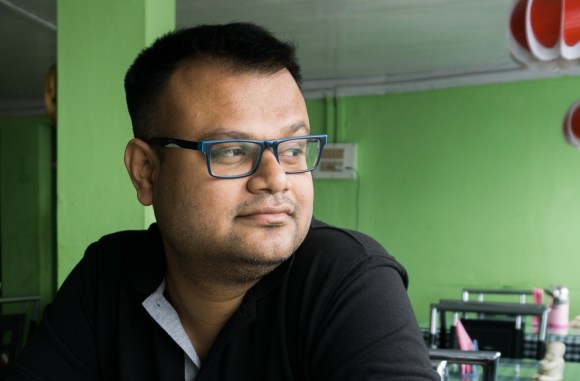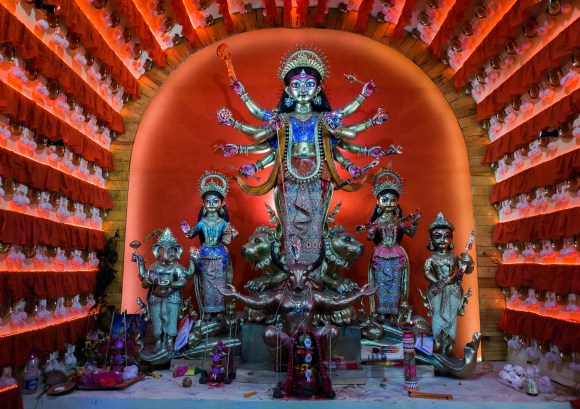
One thing I remember very clearly from my childhood was how my parents would search for books that I would find interesting and engaging. Avid readers themselves, the books they bought for me would only be added to all of the ones we already had. Still, they used to spend hours in College Street, the one stop place for book lovers of Calcutta (now Kolkata) to find the right one for me.
I now understand that my parents wanted me to start with books that had beautiful illustrations and lots of images. They knew that I would find them fascinating, and the books would help me learn how to read.
I have to confess that they were absolutely right.
When I look back and go through the books my parents gave me, they were mostly folktales with dramatic illustrations or children’s general knowledge books, full of bright and colourful images. (At this time, the internet had yet to arrive and encyclopedias were simply too expensive.) So these books were our gateway to the world of fascinating facts and virtual voyages: I came to know about Machu Picchu, the great pyramid of Giza, the leaning tower of Pisa, and many more such places. And without the stunning images accompanying the articles, it would have been difficult for me to visualize those beauties, if not impossible.
Affordable internet for domestic use arrived in our city when I was in college in the early 2000s. Along with small wonders like email and instant messaging, we learned about internet searching. Although the results were rarely as informative as we can all get today, they were enough to keep us hooked. We were learning new things every day, and that is how we came across a new site on one particularly fine afternoon: Wikipedia, the online free encyclopedia.
Before Wikipedia, encyclopedias were fat volumes of leather-bound books. Wikipedia would go on to change many conceptions, but at the time it was unable to fully impress me. On the one hand, I was excited to find an article about our hometown; on the other, I was disappointed to see a sheer lack of images.
Over time, Wikipedia became more and more of an everyday online activity, and I watched as the number of articles about places near me were created and expanded. Still, there were never enough images to satisfy me.

Then came a day out of the blue that changed a lot of things in my life. I joined a photowalk called Wikipedia Takes Kolkata, the second to be held in the city, and uploaded several photos from it. Several months later, I found that one of them was added to an article on the English Wikipedia. That feeling, that someone values your work enough to add it to a page read by thousands of people each year, is hard to explain. That I contributed to beautify an article about a place in our city was a huge for me.
I was already going out on weekends to capture snapshots of my city, particularly the lesser-known places like heritage buildings, for my blog. Transitioning this to Wikimedia Commons was not an incredible change of pace, and my subject areas slowly grew larger to include street scenes, foods, holiday destinations, festivals, and events. I donated any image that I thought could hold educational value to Commons.
But the question of what has motivated me to continue contributing photos is still interesting to me. I am not a professional photographer. It is not my primary source of income, although I do get paid occasionally. So why do I give them to Commons for free?
There are many reasons:
- I don’t think keeping unused images squirreled away on my hard disk would do anyone any good.
- If I can share them on social media, then why not on Commons, where they can be put to good use? By donating them in this way, my images help make the Wikipedia articles about things close to me beautiful.
- I feel that the images I’ve uploaded to Commons are safe from hardware crashes. They are there at the highest uploaded resolution, where I can re-download them again whenever I want to.
- They have a copyright license I agree with, and when they are used elsewhere, I get credit. I have allowed them to be used freely, but I will always remain the creator.
But I have to admit that I’ve felt the most rewarded when my images started getting “quality” and “featured” status. These markers adorn the best images Commons has to offer, and they are awarded only after undergoing a voting process where Wikimedians from all over the world offer their opinions. That they would select my photos has given me a lot of confidence—whatever we do in our lives, appreciation and recognition are things that make the road ahead much smoother, and these quality badges have motivated me both on and off Wikimedia.
Sumit Surai, Wikimedian
You can see Sumit’s best photos on Wikimedia Commons.

Can you help us translate this article?
In order for this article to reach as many people as possible we would like your help. Can you translate this article to get the message out?
Start translation